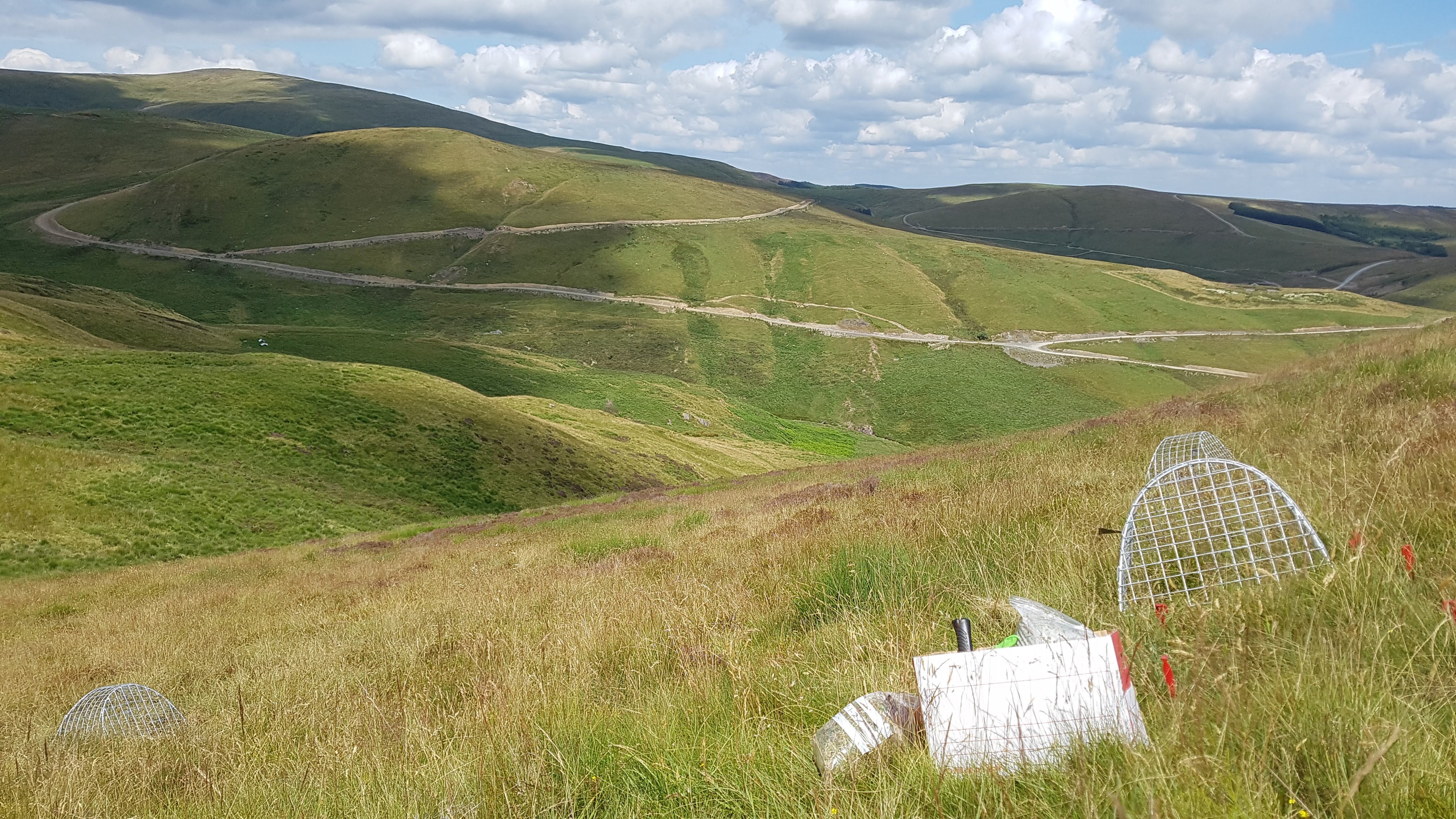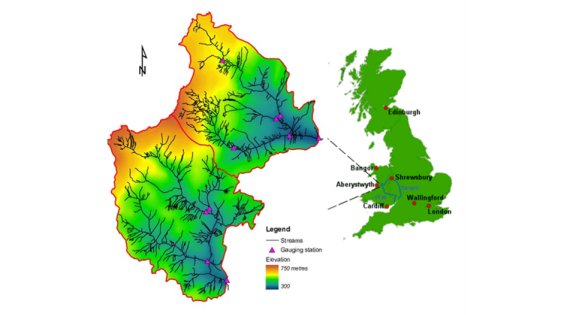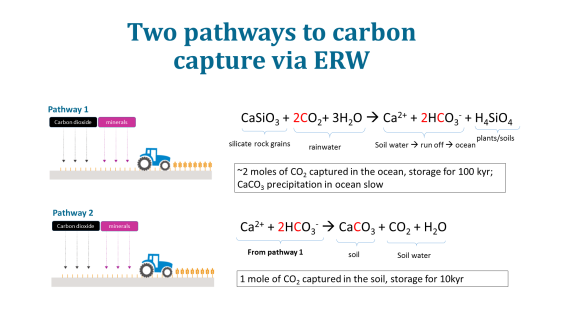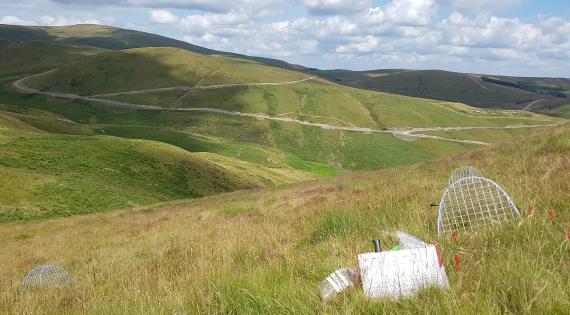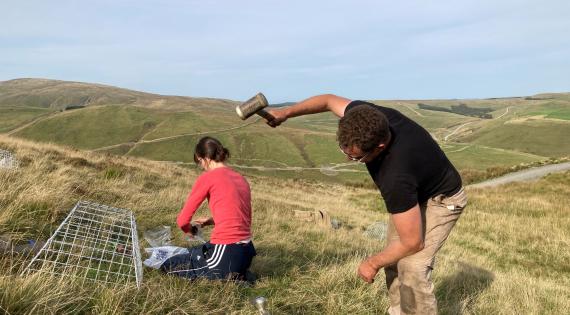The Plynlimon Research Catchments host a demonstrator site to test the hypothesis that application of basalt rock dust onto upland grassland will enhance the long-term capture of carbon in the soil and water.
The Enhanced Rock Weathering (ERW) demonstrator project is part of the UKRI BBSRC funded GGR CO2RE programme, a multi-disciplinary, multi-centre national research hub on Greenhouse Gas Removal (GGR).
The Plynlimon site is led by UKCEH, being the first larger scale test to see if rock dust application can be an effective GGR programme in upland grasslands. Based at the long-term Plynlimon Research Catchments, we will annually apply two years of rock dust (May 2023 and 2024) in a paired catchment experiment, monitoring the impacts through high resolution water, soil, vegetation and GHG measurements.
The project has several key collaborators in the wider GGR via ERW demonstrator, including the Leverhulme Centre for Climate Change Mitigation, Rothamsted Research and NOC.
